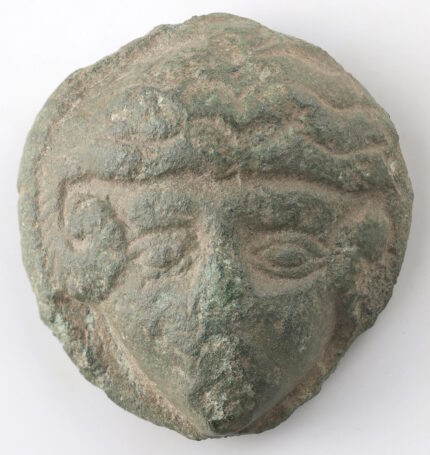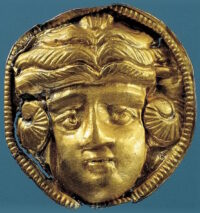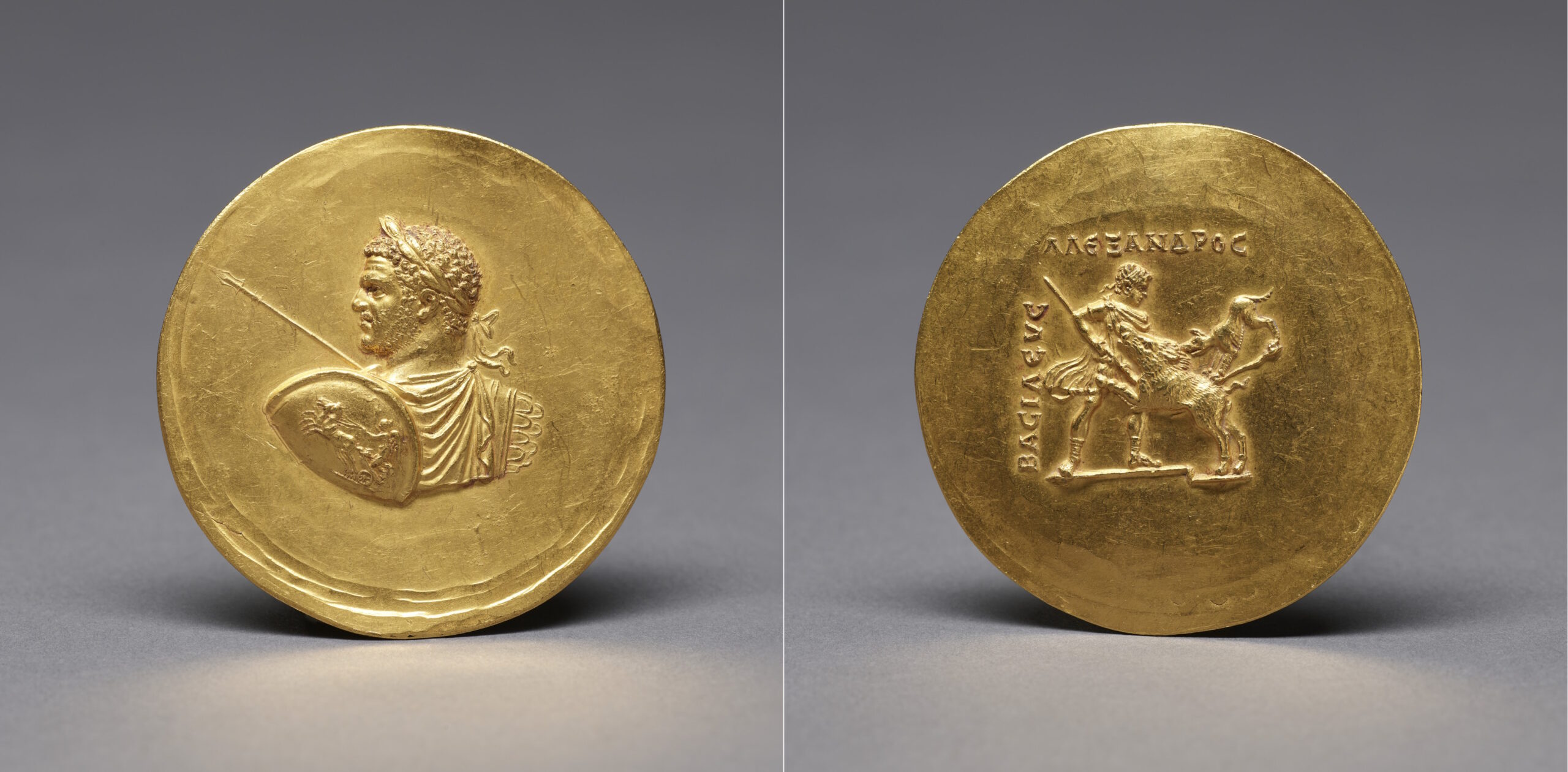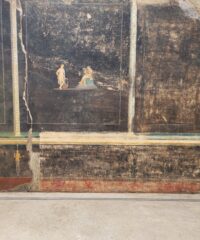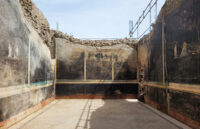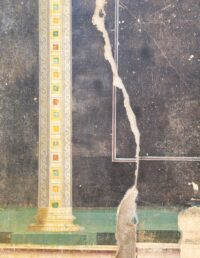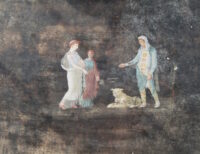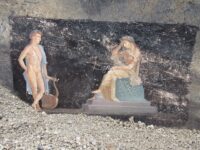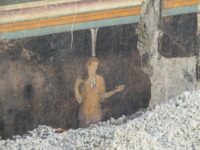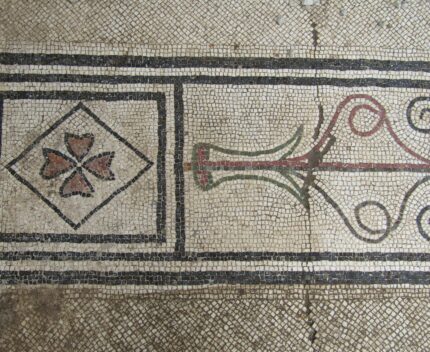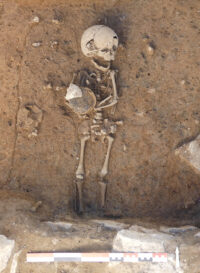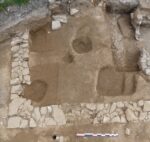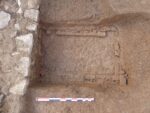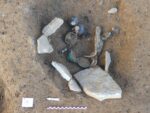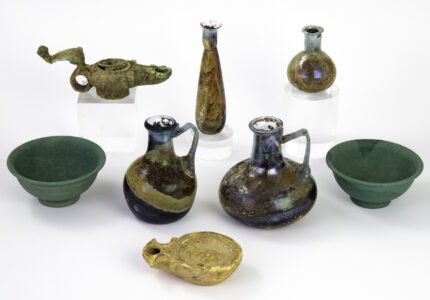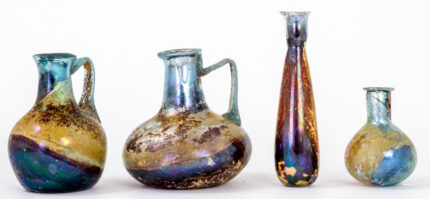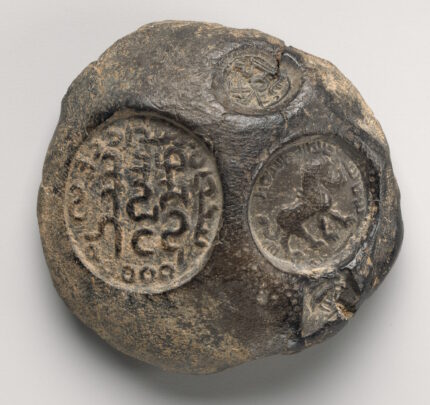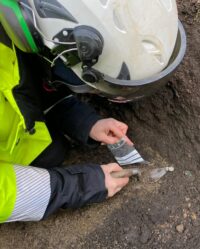 Archaeologists have discovered a hoard of silver bracteates from the 12th century in a grave at the Brahekyrkan church in Visingsö, southern Sweden. It is rare to find extensive grave goods in Christian graves, and large numbers of coins have been found in only a handful of burials from the period. What makes this find unique is that some of these coins are completely unknown on the archaeological record.
Archaeologists have discovered a hoard of silver bracteates from the 12th century in a grave at the Brahekyrkan church in Visingsö, southern Sweden. It is rare to find extensive grave goods in Christian graves, and large numbers of coins have been found in only a handful of burials from the period. What makes this find unique is that some of these coins are completely unknown on the archaeological record.
The county museum archaeologists were overseeing the installation of the church’s new geothermal heating system in mid-March of this year when a skeleton was discovered in a shaft where wiring was to be laid. Three coins were found underneath the 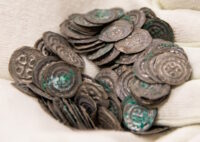 skeletal remains after they were removed, and then more appeared close to the left foot of the individual. Ultimately a total of about 170 silver bracteates (minted on one side only) dating to between 1150 and 1180 were unearthed from the grave. There were also a small number of Gotland coins (minted on both sides). The precise number is not yet known because some of the bracteates and coins are stuck together and they are so thin it’s hard to tell how many of them are in these little stacks.
skeletal remains after they were removed, and then more appeared close to the left foot of the individual. Ultimately a total of about 170 silver bracteates (minted on one side only) dating to between 1150 and 1180 were unearthed from the grave. There were also a small number of Gotland coins (minted on both sides). The precise number is not yet known because some of the bracteates and coins are stuck together and they are so thin it’s hard to tell how many of them are in these little stacks.
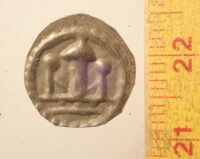 Examination of the bones suggest the deceased was an adult man between 20 and 25 years of age. The grave was outside the medieval church wall, about 100 feet north of it, so at first archaeologists thought the deceased might be someone who had not been allowed to be buried in the consecrated grounds within the church walls, for example someone who died by suicide, unbaptized or unshriven.
Examination of the bones suggest the deceased was an adult man between 20 and 25 years of age. The grave was outside the medieval church wall, about 100 feet north of it, so at first archaeologists thought the deceased might be someone who had not been allowed to be buried in the consecrated grounds within the church walls, for example someone who died by suicide, unbaptized or unshriven.
However, after the recovery of the skeleton and the coins, archaeologists went on to find another 24 graves in that same shaft. All of them were laid to rest in the same orientation, aligned with each other and buried at the same depth. This was not a casual buried of one or two people outside the consecrated boundaries. This was an organized burial ground, and likely had markers above ground. None of the other burials had grave goods of any kind, let alone hundreds of silver coins.
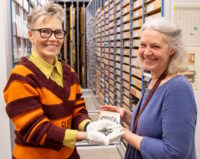 In addition to the burials, the archaeologists uncovered more than 20 ancient hearths. Hearths have been found in the area before. A previous survey in 2005 uncovered three hearths dating to the Roman Iron Age (50-400 A.D.). The newly-discovered hearths haven’t been dated yet, but are likely from the same period.
In addition to the burials, the archaeologists uncovered more than 20 ancient hearths. Hearths have been found in the area before. A previous survey in 2005 uncovered three hearths dating to the Roman Iron Age (50-400 A.D.). The newly-discovered hearths haven’t been dated yet, but are likely from the same period.
The skeletal remains have not all been removed, only the ones that would run the risk of being interfered with during the laying of the wires. They will be examined and then respectfully reinterred. The silver bracteates/coins will be treated by conservators. They will be cleaned, and if it’s possible to do without damage, the groups that are stuck together will be separated.
